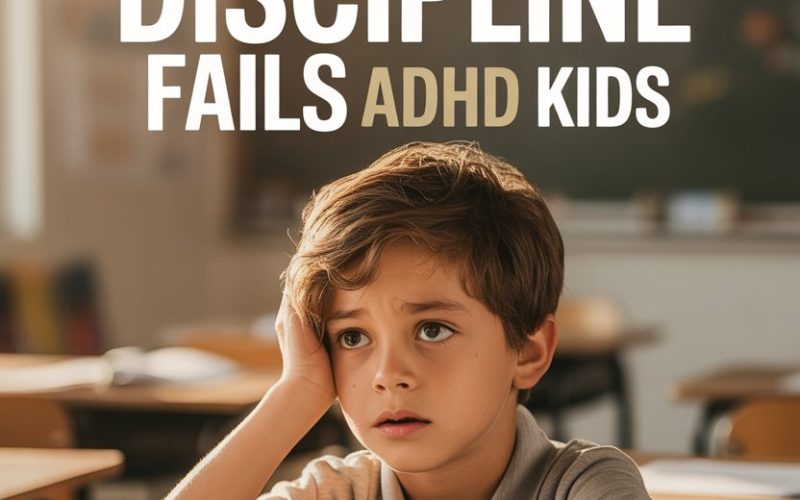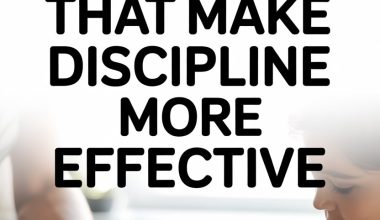Raising a child with ADHD can feel a bit like refereeing a rugby match, except no one seems to know the rules—and the ball is missing half the time.
If you’ve ever found yourself at the end of your tether, wondering why time-outs and sticker charts work for everyone else’s kids but yours, pull up a chair. You’re not alone.
Let’s peek behind the curtain at why the old playbook doesn’t cut it—and what you can do instead.
ADHD Brains Aren’t Wired for “Because I Said So”
Traditional discipline loves its routines: “If you do X, then Y happens.” Your parents may have sworn by it. Teachers probably still do.
For most kids, this cause-and-effect logic functions as the backbone of learning to behave.
ADHD, though, does not RSVP to that party.
The brain wiring involved in ADHD makes cause-and-effect consequences a little fuzzy. Kids with ADHD often struggle with executive functions—the part of the brain that manages self-control, planning, and impulse inhibition.
According to Dr. Russell Barkley, one of the top ADHD researchers, these kids can know the rules perfectly well but have trouble pausing before leaping headfirst into whatever idea pops up.
Picture a fire alarm going off and your child stopping to think, “Hmm, what did Mum say about fire drills again?” Not happening.
The urge to run, shout, or grab the biscuit jar is in the driver’s seat.
Time-Outs, Sticker Charts, and Lost Marbles
Classic discipline tools like time-outs or reward charts rely on delayed gratification. The idea: sit on the “naughty step” for five minutes, and you’ll think about what you’ve done.
Here’s the catch—ADHD brains are notoriously allergic to anything delayed.
Studies have shown that children with ADHD experience time differently; five minutes on a time-out bench can feel like an eternity of solitary confinement, but the lesson rarely sticks.
Rewards offered at the end of the week? Might as well be next century.
A 2012 review in the Journal of Child Psychology and Psychiatry spells it out: kids with ADHD often need more immediate, tangible feedback. If they can’t connect the consequence to their action right away, the learning opportunity sails right by.
Why You Can’t “Discipline Out” ADHD Behaviours
Ever tried to scold your way through forgetfulness or distractibility? It’s about as effective as shouting at a cloud to stop raining.
Behaviours linked to ADHD—interrupting, fidgeting, zoning out—aren’t willful rebellion. They’re symptoms. That’s a vital distinction.
When you punish a child for what they genuinely struggle to control, shame tends to walk in the door, dragging self-esteem behind it.
One study from the CDC found that kids with ADHD are far more likely to receive frequent negative feedback at home and school.
No surprise, this leads to more frustration and less motivation—hardly the outcome anyone’s hoping for.
The Boomerang Effect of Traditional Discipline
Each time an ADHD child faces traditional discipline and it doesn’t work, frustration grows—for both of you. Parents often double down, thinking, “If I’m just a bit firmer, maybe it’ll sink in this time.”
Meanwhile, the child feels misunderstood and may act out even more.
It can become a cycle: misbehaviour, discipline, shame, more misbehaviour. You may find yourself longing for the simpler days when your toughest decision was cloth or disposable nappies.
Why Consistency Isn’t Always King
Conventional wisdom says: Be consistent. Never let things slide. But the ADHD brain doesn’t always play ball.
One day a strategy works (hooray, gold star!) and the next, it’s like you’ve never said a word.
This isn’t you failing as a parent. The ebb and flow of ADHD symptoms throughout the day, or even the hour, means that rigid routines may only go so far.
Some days, your child can keep it together. Others, not a chance.
Dr. Ned Hallowell, co-author of “Driven to Distraction,” explains that flexibility and adaptation are essential.
The key is reading your child’s cues and knowing when to adjust your expectations—not because you’re being inconsistent, but because you’re being responsive.
The Power of Connection Over Correction
Traditional discipline tends to focus on what went wrong. “Don’t do that.” “Stop it right now.” Kids with ADHD, who already rack up more negative feedback than their peers, need positive connection like a plant needs sunlight.
Research from Harvard University’s Center on the Developing Child highlights the role of “serve and return” interactions—simple, responsive moments between adult and child—in building the brain’s architecture.
Positive attention is more than just feel-good fluff; it’s a tool for helping kids learn self-regulation and social skills.
Instead of jumping straight to correction, try connecting first. Get eye-level, use their name, touch their shoulder.
“I can see you’re having a tough time sitting still. Want to take a two-minute wiggle break together?” You might be amazed at how much more effective your coaching becomes.
Immediate Feedback Beats Future Promises
Rewards and consequences work best when they’re quick and concrete. Keep praise close to the action.
Rather than, “If you’re good all week, you’ll earn a big treat on Saturday,” try, “You put your plate in the sink! High five!”
Short, sweet rewards—think a quick game of rock-paper-scissors, a sticker right now, or an extra five minutes with the football—are far more motivating for a child whose sense of time is “now” or “not now.”
The ADHD brain is wired for dopamine, that little burst of happy chemicals, and nothing brings it faster than immediate recognition.
A 2019 study in Pediatrics found that behavioural strategies like immediate feedback and positive reinforcement consistently outperform punishment or delayed rewards for kids with ADHD.
Clear, Visual, and Repeated Instructions
Ever asked your child to “go upstairs, brush your teeth, put on your pyjamas, and bring down your book”—only to find them an hour later playing with LEGO, wearing one sock and a Batman mask?
Multi-step directions are the nemesis of the ADHD brain. Keep it simple. Break tasks down into bite-sized pieces and use visuals wherever possible.
Sticky notes, checklists, or pictures taped to the wall can work wonders.
And repeat. Cheerfully, if you can manage it.
Sometimes, you’ll feel like a broken record. That means you’re doing it right.
Movement and Breaks Aren’t “Rewards”—They’re Needs
Traditional discipline sometimes treats movement as a privilege: “If you finish your work, you can go outside.” For kids with ADHD, movement is a genuine necessity, not just the cherry on top.
Incorporating short movement breaks isn’t spoiling them; it’s supporting brain function. Try a quick run around the garden, five jumping jacks, or a “wiggle song” in the middle of tasks.
Not only does this burn off excess energy, it actually resets focus. Think of it as rebooting a computer that’s frozen—sometimes all it takes is getting up and moving.
When You Need Backup
Sometimes, the best thing you can do is ask for help. If discipline battles are leaving you frazzled, reaching out to your child’s teacher, a paediatrician, or an ADHD coach can help you build a personalised toolkit.
Support groups, both online and in-person, offer a place to vent, swap ideas, and realise you’re not raising your child on an island. No medals for toughing it out alone.
More Compassion, Less Guilt
Parenting an ADHD child calls for creativity and a sense of humour—and buckets of patience you never signed up for. You may not be able to control every outburst, lost shoe, or forgotten lunchbox.
You can, though, choose connection over correction.
Replace the old discipline playbook with strategies that meet your child where they are, not where someone else thinks they should be.
You’ve got this—even if you’re still looking for that missing ball.





